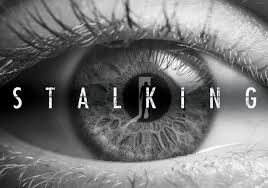The Facts About Stalking
During a 12-month period, 3.4 million individuals over the age of 18 are stalked in the United States.
Three in four stalking victims are stalked by someone they know.
Individuals ages 18 to 24 experience the highest rate of stalking.
Almost half of stalking victims (46 percent) experience at least one unwanted contact per week.
The most common stalking behavior reported by victims was unwanted phone calls or voice messages (66 percent), followed by spreading rumors (36 percent), following or spying on the victim (34 percent), and appearing at places frequented by the victim without having a reason for being there (31 percent).
One in four victims report being stalked through the use of some form of technology (such as e-mail or instant messaging).
Some protective actions victims took included changing their day-to-day activities (22 percent), staying with family (18 percent), installing call blocking or caller ID (18 percent), changing their phone number (17 percent), and changing their e-mail address (7 percent).
What Is Stalking?
Stalking is a dangerous, potentially lethal, crime. While legal definitions vary from one jurisdiction to another, stalking is generally understood to be a pattern of behavior directed at a specific person that would cause a reasonable person to feel fear. Stalkers use a variety of actions to frighten, harass, and control their victims. Stalking may include following a person; driving by a victim’s place of employment or school; sending unwanted gifts, cards, or e-mails; persistently calling or text messaging; tracking a victim’s whereabouts using technology such as cameras or global positioning systems (GPSs); vandalizing property; and threatening to hurt the victim, his or her family, another person, or pets.
Stalking is a crime in all 50 states and at the federal level, and it can happen to anyone regardless of gender, race, sexual orientation, socioeconomic status, geographic location, or personal associations. The majority of stalking victims are women and most stalkers are men, but men can be victims, too.
Three out of four stalking victims were stalked by someone they know; of these, 45 percent of stalkers were acquaintances of the victim and 30 percent were intimate partners.1 Stalking by an intimate partner is the most dangerous type of stalking. Intimate partner stalkers have considerable leverage over their victims because they know so much personal information about the victim. These stalkers also tend to be more insulting, interfering, and threatening than non-intimate partner stalkers. Alarmingly, a strong link exists between stalking and women who were murdered by their current or former intimate partner.
If You Are Being Stalked
As a stalking victim, you may experience a variety of emotional, physical, and financial consequences. The constant stress in stalking situations is very real and harmful, and it can exact a terrible toll on victims.
The daily lives of stalking victims are unpredictable, and that often makes them feel anxious or on edge. Stalking victims may feel vulnerable and unsafe, and many say they feel they are always looking over their shoulder. Many victims come to believe that the stalking is never going to end, which can lead to feelings of isolation, anger, frustration, depression, and hopelessness.
Stalking victims often experience trouble sleeping, eating, and focusing, or they may have disturbing thoughts and flashbacks. Victims often lose time from work as a result of the stalking. And some take drastic measures to protect themselves such as moving or changing their names.
If you are being stalked, remember that what is happening to you is not your fault and not caused by anything you have done.
Where Can You Get Help?
Every stalker and stalking situation is different and unpredictable—what works for one stalking victim may not work for another. But there are steps you can take to increase your safety.
First, take all threats seriously and trust your instincts. If you feel that you are in danger, you probably are. Contact your local victim services agency or a domestic violence or rape crisis program. Trained advocates can work with you to develop a concrete plan to help you stay safe, understand the law and your rights, decide whether to seek a protective order, connect with other services, and provide emotional support.
Consider telling family, friends, coworkers, and neighbors about the stalking, and provide as much information as you feel comfortable about the stalker. This may help you feel less alone and provide a support network of people who care about your safety.
You may wish to report the stalking crime. If so, contact law enforcement as soon as possible. Also, it is important to document every stalking incident as thoroughly as possible. Keep e-mails, messages, gifts, and letters. Take photographs of property destruction or physical injuries the stalker has inflicted. The stalker may have broken other laws by doing things like vandalizing your property or physically assaulting you. Law enforcement can use this information to investigate and prosecute the stalking.
You might consider obtaining a protective order or other court order that prohibits the stalker from contacting or being near you. Each jurisdiction differs in the type of orders that are available. Additionally, you may be eligible for crime victim compensation for certain out-of-pocket expenses, such as medical expenses, lost wages, and other reasonable financial needs. To be eligible for compensation, the victim must cooperate with the criminal justice system. Local victim advocates and assistance programs in your community can assist you in obtaining a protective order and provide you with information and applications for victim compensation.
https://www.ovc.gov/pubs/helpseries/HelpBrochure_Stalking.html

